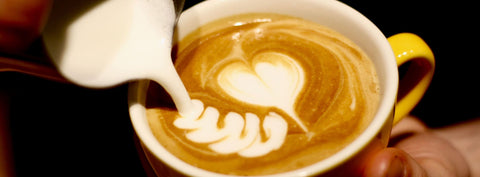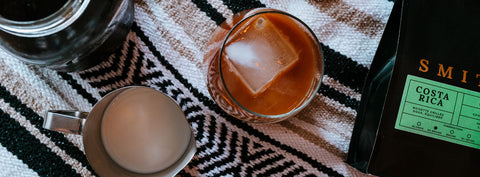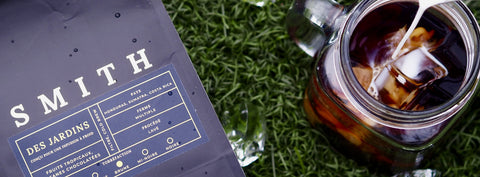It is often mistakenly thought that the success of a latte depends solely on milk. How many times I was brought, during a dinner with friends or family, to a corner of the kitchen so that I could explain THE technique. I am always enthusiastic to share my knowledge, but I find that my loved ones are sometimes disappointed to discover that there are many parameters to control to make a beautiful latte, more specifically latte art.
The basics: how to make a good espresso?
To get a good espresso, you have to think about several small details. If you don't have a grinder built into your espresso machine, you'll need a separate grinder. If you don't have a grinder at home, you can always ask your barista to grind the coffee you buy at the branch. Ideally, you should have a scale, to ensure you have the correct amount of ground coffee in your portafilter. An espresso is made with a very finely ground bean.
You should have approximately 18g of coffee in your dual portafilter. Then, you have to put pressure on your coffee using a pad adapted to the format of your filter holder. You do not need to force at this stage, a weight transfer is enough. The goal is to create a smooth, straight surface for a quality espresso, with a nice golden crema that is essential for making a proper latte.

Once your portafilter is installed on the group of your machine, start the infusion. Your espresso should flow between 25 and 30 seconds. If it drips in less than 25 seconds, ask yourself these questions: is your grind too coarse? Did you apply sufficient pressure with the pad? Is there really 18g in your portafilter? This low-quality infusion, called under-extraction, will not provide the taste and texture you are looking for in a good latte. The cream will be pale, sour and dimensionless in flavor. If your espresso flows in more than 30 seconds, check if your grind is not too fine, if your pressure is too strong with the pad or if there is more than 18g in the portafilter. In this case, you will get an over-extraction and it is not more interesting to drink, in addition to making a lifeless surface, a holey and unsuitable cream to make a drawing afterwards.
The final step: how to properly froth the milk for the latte?

This step is definitely the one that will require the most practice. To start, make sure you have cold milk, no matter what kind. Cow's milk is easier to work fine than plant-based milks. To be able to make a latte art that will impress your loved ones, there are a few parameters to watch out for.
You must first purge the steam wand to remove any water and milk residue that may be there. Half fill your pitcher with milk and hold it upright, placing the nozzle inside, just below the surface of the milk, without touching the edges. Hold the pitcher handle with one hand and turn on the steam. Your free hand should be near the base of the pitcher and will serve as your heat indicator, unless you are using a thermometer. The ideal heat for a milk latte is 60-70 degrees Celsius. For the first few seconds, you must stay on the surface to create very fine micro bubbles. When your milk seems to have gained a creamier texture (usually after a few seconds), leave the nozzle below the surface near the center to create a swirl in the pitcher. Swirl the milk until you can no longer tolerate the heat on your hand which is in contact with the bottom of the pitcher, this is the indication that you have reached a good heat, without however burning your milk . Boiled milk will taste bad like pudding or egg, so be on the lookout. Then take the time to clean your nozzle with a damp cloth and purge it again.

That's it, you're almost there! All you have to do is tap the pitcher on your countertop to pop the bubbles, then swirl the milk to get a glossy, paint-like texture. With the cup in one hand and the pitcher in the other, start pouring the milk in the middle of the cup, about 5 cm high. When you get halfway through the cup, quickly bring the pitcher closer to the cup, continuing to pour into the center. The foam should start to form a circle. When the cup is almost full, raise the pitcher a little and make a thin line across the circle. This is the basis of latte art! I advise you to try the heart pattern first, as it is the easiest to master. Good coffee ;)

SARAH-EVE ,
Barista expert, trainer & writer on our blog. Meet Sarah-Ève every day of the week in our Limoilou branch!
Check out his story here...
.




Comments (1)
Très intéressant, l’article sur le latté, je pratiquerai encore après vos conseils